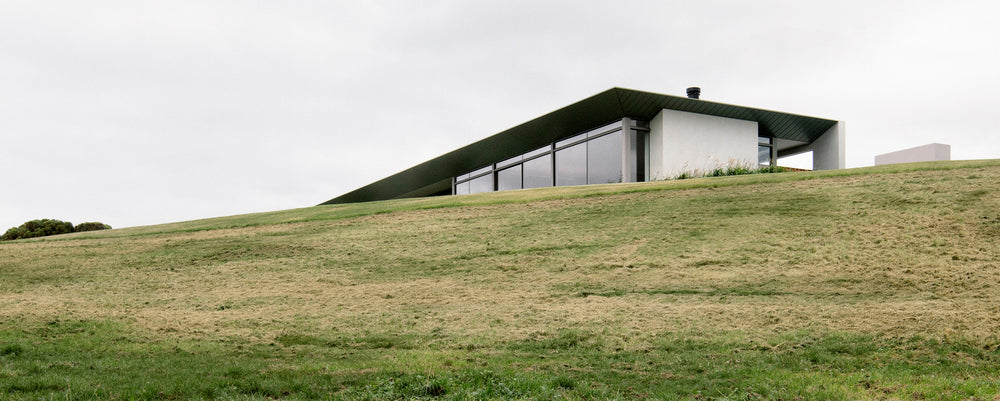
Designer Sue Carr is motivated by "the power of what interior design is about," to create work that is defined by a "seamless interface with architecture". Heading up Carr one of Australia’s leading practices that just celebrated 50 years, Sue Carr was recently awarded an (AM) of the Order of Australia for her significant service to interior design. Here, More Space catches up with the designer to talk about the career milestone and the pivotal projects that have shaped her practice, the daily rituals that frame a full life, the importance of landscape to the studio, and a succession plan that is all about nurturing future leaders.
Never one to flinch at a challenge, it was during the heady 1970s, and a global recession, when interior designer Sue Carr first stepped out under her own steam in Melbourne. “I started my business in 1971 not realising we were in the midst of a recession, which really took me by surprise,” Carr remembers. "We didn’t know any different so we just worked harder to get through, and once it was over we took off like birds". Inarc would quickly define itself as the goto design firm for clients who wanted much more than the status-quo. Workplace design defined the commercial side of the business and bespoke homes the residential, with pivotal projects including legal chambers for QCs at 200 Queen Street, Grocon’s first building in Melbourne, marking a paradigm shift for the profession and heralding the arrival of Carr.
"It was such a different way of approaching a fitout for barristers and it challenged the status quo entirely," explains Carr. 'It became a benchmark and was soon followed by countless briefs". Planned around a consolidated circular library filled with beautiful leather-bound tomes, for the first time chambers would give the barristers' support team views as well. "Instead of being denied of any visual stimulus, they had this wonderful library that could be seen through the glass," Carr explains. Another standout is the Portsea beach house built right up to the sand along Shelly Beach. Inspired by Victoria’s famous timber beach boxes it would become one of the most important pieces of architecture for the studio in the early years.

The Carr design studio in Melbourne. Photo © Nicole England.
"I think the pivotal moment to start my own business was my frustration with the lack of respect or understanding of interior design. The other motivation was really to demonstrate the potential and power of interior design, and to create that seamless interface with architecture," says Carr, whose 50 year career is defined by unfaltering focus, business acumen, and what Carr herself describes as a "pared back and neutral approach to the work". By 1991 Carr had teamed up with Denton Corker Marshall to head its highly successful interiors wing as DCMI, and by 1995 had launched Carr Design Group which has become one of Australia’s most successful design and architecture practices, and Sue Carr one of the countries most celebrated designers who this year was awarded an (AM) of the Order of Australia for her significant service to interior design in the 2021 Queen’s Birthday Honours List.
Highly motivated and driven, Carr describes her daily ritual as "regimented". Rising by 5am every morning to catch up on world news, before training and heading into the studio, her creativity also finds expression through a passion for cooking and nurturing the garden on weekends. "I think the only regret I have in my life is that I didn't study landscape design in addition to interior design," Carr remarks. "To me landscape is so much part of the built form". Carr thrives in the studio environment, her diary overflowing with client and team meetings, workshops, designing and visits to numerous building sites. Projects include some of the countries most refined buildings, their detail honed to the bone. Ask Carr about a favourite brief or a standout project and she includes the tiny ones received from clients with a vision that allowed the team to challenge things, to the big break design of Melbourne’s stock exchange that in 1991 was the world’s first electronic exchange. "We said well, in this world where computers are happening, why would you have chalkies running up and down marking a blackboard when we can use technology to deliver that information," Carr explains. "That was an amazing experience but I wouldn't say it's the best because there are so many wonderful briefs."

The Jackalope Hotel on the Mornington Peninsula in Victoria by Carr. Photo © Sharyn Cairns.
"I think the pivotal moment to start my own business was my frustration with the lack of respect or understanding of interior design. The other motivation was really to demonstrate the potential and power of interior design, and to create that seamless interface with architecture."
Sue Carr AM, Founding Principal, Carr.
It is the Jackalope Hotel on the Mornington Peninsula that opened in 2017, and has received a swathe of design awards including a Victorian Architecture Award from the AIA, that gets a special mention along with its founder Louis Li. The project would push the team out on a limb. The result is the deft interplay between contemporary Australian shed vernacular, juxtaposed with the interior’s labyrinth of dark and eclectic spaces brought to life through experimental details and artful installations. "Louis Li's vision to create this unique space was challenging," explains Carr. "It was fearless in some ways and we took risks. Having Li’s imagination to help us build the narrative and then pulling together a strong art influence, would become a great experiment that we pulled off and, gratefully, we were awarded highly for it". It’s a project that has taken Carr on a side-step from the understated, cool and controlled, expressing itself more fully through art-filled spaces filled with drama and a hint of the eccentric that somehow works within the rural landscape. "It was worth every agonising minute," Carr continues. "Louis is such a lovely, inviting young man. At the opening we met his mother, father, aunts and uncles. It's those special moments that resonate with me. We are very fortunate to have wonderful friendships not only with a single client, but with the family or the business organisation too."
Those close relationships underpin the success of the practice, and years of working with high-profile clients and sometimes eccentric briefs, has honed the team’s skill in listening and shaping seemingly impossible ideas into form. "We have a very detailed analysis that’s grown over the years, clients often can't believe the amount of detail we go into but it makes them think about what they really want," explains Carr. "We find that we are able to develop the concept quickly because we've spent that time with them. Then of course, we're examining the site and regulations, talking with authorities, understanding the nuances and the placement of that building on the land. If we are working within an existing building, the same applies. We're always analysing the aspect, light and shade, the movement of the sun, the prevailing winds, all the things that make up what is really important in life. All of those elements add to our experience of living and working, and for us as designers it's vital."
"There's an underlying sense of simplicity, authenticity, quality and longevity that is instilled in our practice. I think whichever way our designers work, they look for that and I guess that's why we attract the incredible people we attract because that's what they believe in too."
Sue Carr AM, Founding Principal, Carr.
On any given day Sue Carr is busy working on a multitude of projects, including the practice’s bespoke residential business that informs multi-residential projects from Rokeby Street to Brunswick Yard, applying the infinite learnings about the way people live to projects where there is no one particular client. "With multi-residential projects we have a client but we don’t often have an owner," explains Carr. "So it’s critical we consider all the things that we know are needed. Our commercial architecture projects naturally interface with workplace interiors, so I am involved in that too along with business development and the exciting competitions we participate in."
Right now business development includes succession planning which Carr has been driving for the past few years, carefully laying the foundations for the day when working five to six days a week may not be on the agenda. Though equally important to Carr, is acknowledging the future leaders within the business. "I can’t envisage not working but I know I will have to one day. I have always been in awe of our young people, evolving their incredible skills, growing and becoming leaders," Carr remarks. "It all comes back to looking at the people you believe have the right values to take it forward. There's an underlying sense of simplicity, authenticity, quality and longevity that is instilled in our practice. I think whichever way our designers work, they look for that and I guess that's why we attract the incredible people we attract because that's what they believe in too."


























